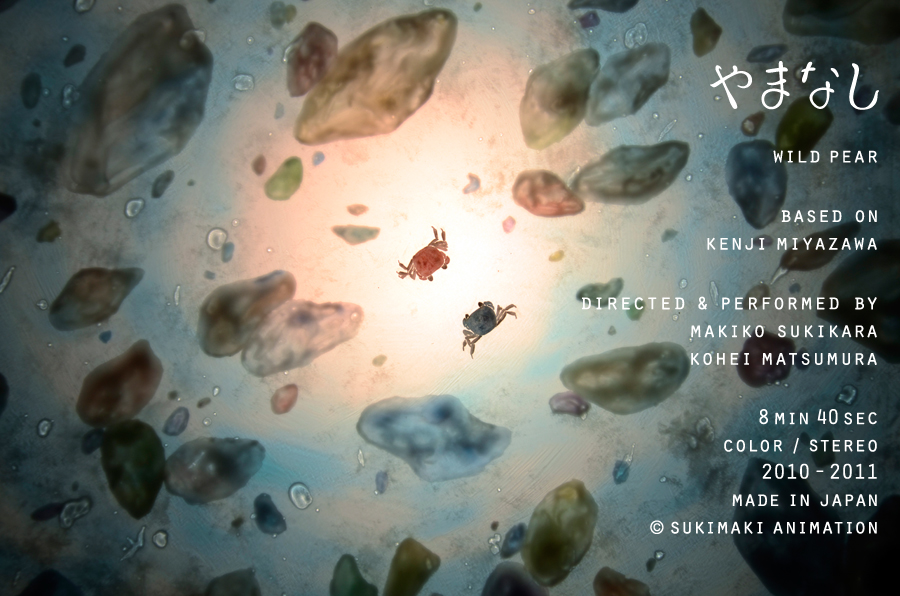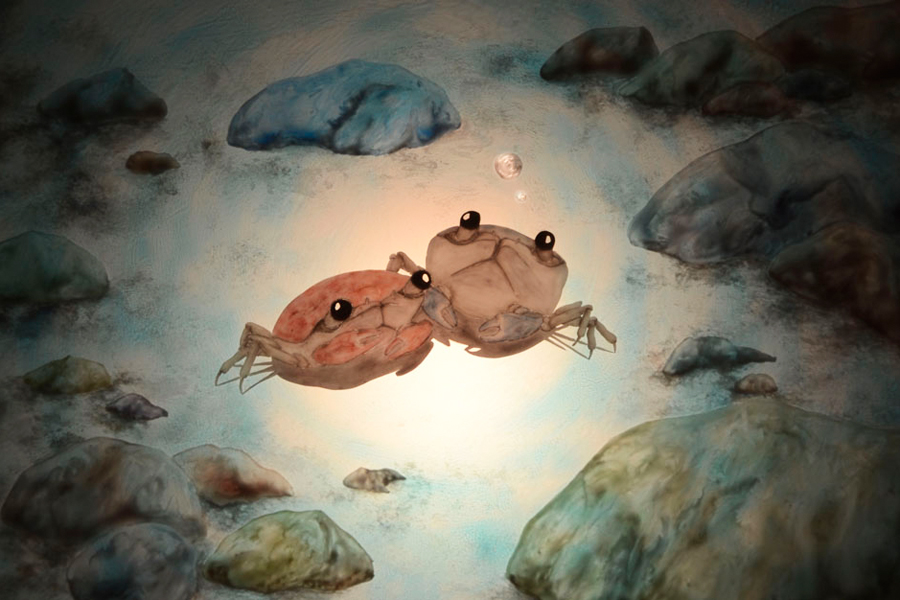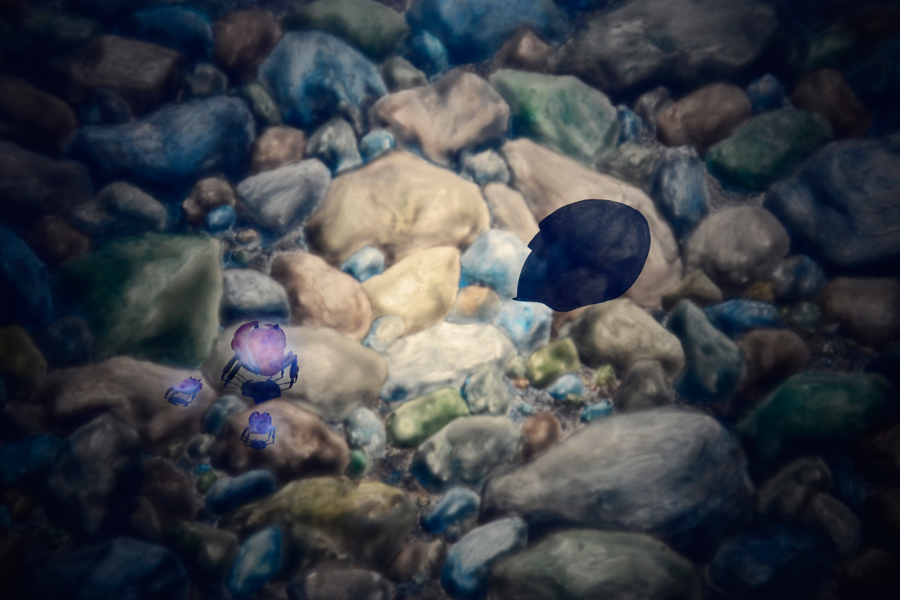WILD PEAR
Based on Kenji Miyazawa
Animation : Makiko Sukikara
Music from "Suite For Toy Piano" composed by John Cage
Narration : Ikumi Sukikara
Directed & Performed by Makiko Sukikara & Kohei Matsumura
2011
NTSC 16:9 (1080p High Definition)
Color, Stereo
8min40sec
© sukimaki animation

There are a variety of "blue" in Kenji Miyazawa's works. He expressed "blue" in mineral, nature scenes, chemical phenomena etc. His "blue" has clearly silence and bright. I feel loneliness and fear from his works. On the other hand, it has something for us to find what a wonderful world. People in the early 20th century lived in poverty by several earthquake disaster and famine. Kenji worked hard in agriculture for their life and said the words for human mind. In 2010, I've started making the animation work " Wild Pear ". Kenji Miyazawa's " Wild Pear " reminds me of the world that I felt in my childhood. Growing up, we could no longer see the tiny precious things. I hope that the audience feel the value and the beauty of those by my animation. I never change my mind after the huge disaster in March 2011. Written by director Makiko Sukikara

This film is based on Kenji Miyazawa " Wild Pear ". Here are two little stories of the bottom of a little valley brook. Scene of May. On the bottom brightened by the gold of sunbeams. Two tiny young crabs were playing riddles about Klammbon. Klammbon were killed by a fish, a fish was taken away by a kingfisher, and Klammbon ware born laugh again. Father crab cuddled tiny crabs scared of endless cycle of rebirth. Mountain cherry blossoms floated past as telling the end of spring. Scene of November. In quiet night of the moon bright. The younger crabs had grown rather big were playing to blow bubbles at the ceiling. Suddenly, a big wild pear fell and floated. The three crabs chased after the wetly bobbing pear to smell good. The pear got snagged in a branch, and stopped. And above, it, a halo of moonlight, broken into rainbow colors, gathered in a misty softness. The three crabs, father and sons, have decided to wait to become ripe and delicious sake, the pear. So they went back to their own hole.

私にとっての宮澤賢治作品の魅力は、鉱物や情景などで表現される多様な青色です。 宮澤賢治の青色は寂しさと怖さを感じると同時に、透き通った静けさと輝きに触れることが出来ます。 それは世界の美しさに感動する心を養ってくれます。 彼が生きた時代の人々は、度重なる震災と飢饉によって生活が逼迫されていました。 彼は人々の生活がより良くなるように農業に勤しみ、人々の心がより豊かになるように言葉を発していました。 2010年にアニメーション作品《やまなし》の制作を開始しました。 原作《やまなし》を読むと幼少の頃に感じていた世界を思い出します。 大人になる過程で見えなくなってしまった沢山の小さなものに、 アニメーションという技法を用いることでもう一度命を吹き込みたいと思いました。 《やまなし》を通じて、身近にあるものの大切さや美しさを感じてもらえれば嬉しいです。 2011年3月に起こった大きな震災を経て、作品が完成した今もその思いは変わりません。 監督・鋤柄真希子記

宮澤賢治原作“やまなし”(1923)のアニメーション 小さな谷川の底を映した二つの小さな物語。 五月の情景。黄金の光に満ちた水の底。 二疋の蟹の子供らが自分たちより小さなクラムボンについて謎掛け遊びをしている。 クラムボンは魚に殺され、魚はカワセミに連れ去られる、そしてクラムボンがまた生まれては笑う。 生まれては消えていく世界をこわがる蟹の子供らをお父さんの蟹が抱きしめるとき、 春の終わりを告げるように、樺の花びらが水面を流れていく。 十一月の情景、月の明るい静かな夜。 よほど大きくなった蟹の子供らは、水の天井に向けて泡を吐いて比べっこしている。 突然、天井から落ちてきたやまなしのいい匂いにつられて、親子の蟹はあとを追う。 やまなしは木の枝にひっかかってとまり、月光の虹をまとう。 親子の三疋の蟹はやまなしが熟しておいしいお酒になるのを待つことにして、巣穴に帰っていく。